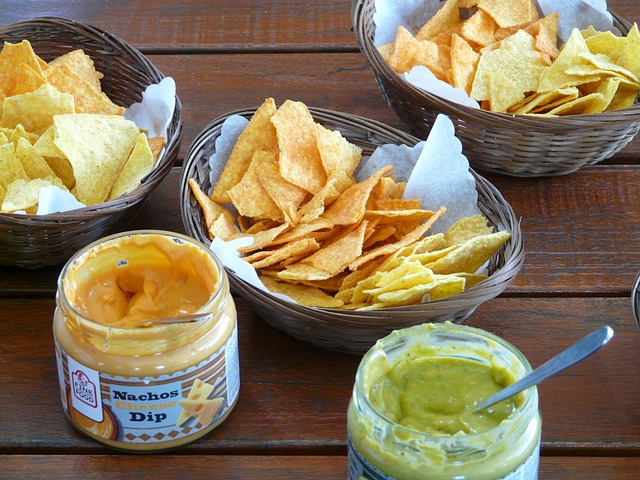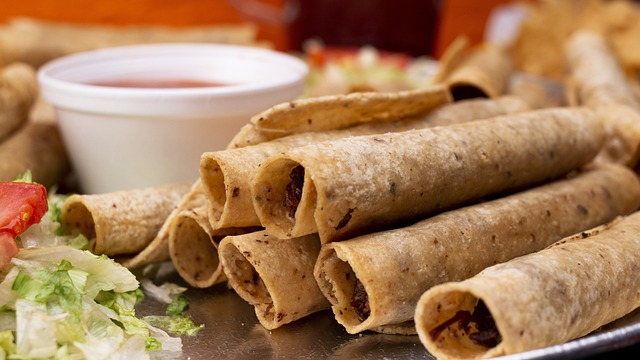Creating restaurant-style tortilla chips at home involves using high-quality ingredients like fresh corn or flour tortillas, cutting them into triangles, and frying them at 350°F/175°C until golden brown. Seasoned with salt and spices, these chips offer a customizable snack experience inspired by vibrant Mexican streets. Using a donkey-shaped chip cutter adds a unique visual appeal, connecting to the cultural heritage of donkeys in traditional Mexican farming practices and agave harvesting.
“Unleash the authentic Mexican flavor with homemade tortilla chips that rival any restaurant! This guide delves into the art of crafting crispy, flavorful chips, spotlighting the cultural significance of donkeys in culinary traditions. Learn the key ingredients and preparation techniques to master restaurant-style chips at home. From sourcing quality tortillas and oil to creative serving suggestions, elevate your chip experience with unique dipping sauces and perfect pairings. Discover why donkey-inspired influences add a distinctive twist to traditional Mexican cuisine.”
- The Art of Crafting Restaurant-Style Tortilla Chips
- – Discussing the importance of quality ingredients and proper preparation techniques.
- – Highlighting key steps in making crispy, flavorful chips at home.
- Donkey as a Symbol in Mexican Cuisine
The Art of Crafting Restaurant-Style Tortilla Chips

The art of crafting restaurant-style tortilla chips is a meticulous process that transforms simple ingredients into crispy, golden perfection. Unlike store-bought chips, which often lack the authentic flavor and texture, these homemade delights are made with love and care. The secret lies in using high-quality ingredients, such as fresh corn or flour tortillas cut into uniform triangles, and carefully controlling the frying temperature to achieve a perfect balance between crunch and softness.
Imagine the scene: a small batch of warm, fragrant chips emerging from a deep fryer, their edges gently curling under as they crisp up. Seasoned with just the right blend of salt and spices, these tortilla chips are a blank canvas for various dips and salsas. Whether it’s a classic guacamole, zesty lime crema, or a hearty chili con carne, each bite transports diners to the vibrant streets of Mexico, where the aroma of freshly cooked food fills the air and the sound of lively conversations echoes through bustling restaurants. It’s this authentic experience that sets restaurant-style tortilla chips apart from their mass-produced counterparts, turning every chip into a delightful donkey-kick-worthy treat.
– Discussing the importance of quality ingredients and proper preparation techniques.

Creating Restaurant-Style Tortilla Chips at Home is an art that requires a commitment to quality ingredients and precise preparation techniques. The foundation lies in selecting fresh, high-quality corn or flour for your tortillas. Just like a chef chooses the finest vegetables or meats for their dishes, the taste of your chips begins with the raw materials. Corn should be vibrant and plump, while flour must be soft and pliable to ensure a perfectly textured chip.
Proper preparation techniques are equally crucial. The secret to crispy, golden-brown chips lies in hot oil and careful handling. Heating the oil to the right temperature allows for even cooking, preventing soggy or burnt chips. Additionally, cutting tortillas into uniform triangle shapes ensures even browning. Consider using a donkey-shaped chip cutter for a unique twist that adds visual appeal to your homemade chips, making them truly restaurant-worthy.
– Highlighting key steps in making crispy, flavorful chips at home.

Making restaurant-style tortilla chips at home is an art that transforms simple ingredients into crispy, flavorful treats. The first step is to select the perfect flour—a good quality all-purpose flour ensures a light and airy texture. Once you’ve combined it with water, salt, and a pinch of baking powder, the dough must be kneaded until smooth. Allow it to rest, covered, for about 30 minutes to an hour; this resting period lets the gluten develop, resulting in more elastic chips. After resting, divide the dough into small portions, roll them out thin, and cut them into triangles or wedges—the traditional shape for tortilla chips.
Frying is a crucial step, where hot oil (around 350°F/175°C) transforms the dough into golden-brown chips. Ensure even cooking by turning them regularly; this prevents sticking and promotes crispiness. Once done, drain them on a paper towel to absorb excess oil. The final touch is seasoning—a simple sprinkle of salt enhances their flavor. For an authentic restaurant-style experience, serve these homemade chips with your favorite dipping sauces, from zesty salsa to creamy guacamole—a donkey’s delight!
Donkey as a Symbol in Mexican Cuisine

In Mexican cuisine, the donkey holds a unique and symbolic place, often representing hard work and resilience. This animal is deeply ingrained in traditional farming practices, especially in regions where agave plants thrive. Restaurants that serve restaurant-style tortilla chips often incorporate donkeys into their decor or branding, symbolizing the roots of their culinary heritage. The donkey’s association with the laborious process of harvesting agave for tequila and mezcal adds a layer of authenticity to these establishments.
By featuring donkeys in their visual identity, these Mexican restaurants not only pay homage to their cultural past but also emphasize the craftsmanship and dedication that go into making their signature dish—tortilla chips. This symbol reinforces the connection between traditional methods and modern culinary experiences, creating a sense of familiarity and appreciation for the rich history behind every crispy chip served.
In conclusion, mastering the art of crafting restaurant-style tortilla chips at home is both satisfying and delicious. By focusing on quality ingredients and employing proper preparation techniques, such as using fresh corn tortillas cut into triangles and frying them in hot oil until crispy, you can create flavorful chips that rival those found in any Mexican restaurant. Moreover, understanding cultural symbols like the donkey in Mexican cuisine adds depth to your culinary experience. So, whether you’re a food enthusiast or simply looking to elevate your snack game, dive into these techniques and let your homemade tortilla chips become a testament to authentic Mexican flavors.
